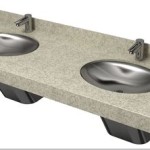How To Tighten a Delta Bathroom Sink Faucet Handle
A loose bathroom sink faucet handle, particularly on a Delta faucet, can be a common household nuisance. It not only detracts from the aesthetic appeal of the fixture but can also lead to dripping and potential water waste. Fortunately, tightening a Delta bathroom sink faucet handle is often a straightforward process that most homeowners can accomplish with basic tools and a little patience. This article provides a comprehensive guide to diagnosing the cause of the looseness and methodically tightening the handle, ensuring a secure and functional faucet.
The looseness can stem from several underlying issues. Identifying the specific cause is crucial for selecting the correct tightening method. Common culprits include a loose set screw, a worn-out cartridge, or a damaged mounting nut. Each of these issues requires a different approach to rectify.
Identifying the Cause of the Loose Handle
Before attempting any repairs, a careful inspection of the faucet is necessary. Gently wiggle the handle to assess the extent of the looseness. Observe the movement of the handle and the surrounding components. Is the handle rotating freely without engaging the faucet mechanism? Is the entire base of the handle loose? Does the faucet drip even after the handle is fully turned off?
If the handle wobbles independently of the spout, the problem likely lies within the handle itself, specifically with the set screw or the internal connection to the valve system. If the entire base of the faucet moves along with the handle, the issue is likely related to the mounting nut located underneath the sink. Dripping, even when the handle is off, suggests a worn cartridge or valve component, which may require replacement rather than simple tightening.
Note the specific model of the Delta faucet. This information is often found on the faucet itself, on the original packaging, or in the installation manual. Knowing the model number is helpful when searching for replacement parts or specific instructions relevant to that particular faucet design.
Different Delta faucet models have varying handle attachment mechanisms. Some utilize a set screw, typically located on the side or under the handle. Others rely on a cap that conceals a screw. Understanding the specific design of the faucet is crucial for accessing the internal components without causing damage.
Tightening a Handle with a Set Screw
Many Delta faucets use a set screw to secure the handle to the valve stem. This is a relatively simple mechanism that can become loose over time due to vibrations and regular use.
The first step is to locate the set screw. It is usually a small, recessed screw positioned on the side or underside of the handle. A small Allen wrench, also known as a hex key, is required to tighten or loosen this screw. The size of the Allen wrench will vary depending on the faucet model, so it may be necessary to try several sizes to find the correct fit.
Before attempting to tighten the set screw, it is advisable to loosen it slightly first. This helps to dislodge any corrosion or debris that may be hindering the tightening process. Insert the correct-sized Allen wrench into the set screw and turn it counterclockwise a fraction of a turn. Do not remove the set screw completely, as it can be difficult to retrieve if it falls into the sink drain.
After loosening the set screw, tighten it clockwise until it is snug. Avoid over-tightening, as this can strip the threads of the screw or damage the handle. The handle should now be firmly attached to the valve stem without any wobble. Test the handle by turning the faucet on and off to ensure that it operates smoothly and securely.
If the set screw appears damaged or stripped, it may need to be replaced. These screws are typically available at hardware stores or plumbing supply stores. When replacing the set screw, ensure that the new screw is the correct size and thread type for the faucet.
Tightening a Handle with a Screw Under a Decorative Cap
Some Delta faucets conceal the handle screw beneath a decorative cap. This design provides a cleaner aesthetic by hiding the screw from view.
To access the screw, the decorative cap must be removed. This can usually be accomplished by gently prying the cap off with a small, flat-head screwdriver or a plastic putty knife. Wrap the tip of the screwdriver or putty knife with a soft cloth to prevent scratching the faucet finish. The cap may be held in place by friction or by a small retaining clip.
Once the cap is removed, the screw that secures the handle will be visible. Use a screwdriver of the appropriate type (usually Phillips-head or flat-head) to tighten the screw. As with the set screw, avoid over-tightening the screw to prevent damage to the handle or the faucet body.
After tightening the screw, replace the decorative cap. Ensure that the cap is properly aligned and securely snapped into place. Test the handle to confirm that it is now firmly attached and operates smoothly.
If the screw is stripped or damaged, it will need to be replaced. Take the old screw to a hardware store to ensure that the replacement screw is the correct size and thread type.
Addressing a Loose Mounting Nut Underneath the Sink
If the entire base of the faucet is loose, the problem likely stems from a loose mounting nut located underneath the sink. This nut secures the faucet body to the sink and can loosen over time due to vibrations and water pressure fluctuations.
Accessing the mounting nut requires working in the confined space underneath the sink. Clear the area of any obstructions, such as cleaning supplies or storage containers. It is also advisable to place a towel or pad on the floor to protect your knees and back.
Locate the mounting nut that secures the faucet to the sink. It is typically a large plastic or metal nut located directly beneath the faucet body. The nut may be difficult to access due to plumbing lines and other obstructions.
Use a basin wrench, also known as a faucet wrench, to tighten the mounting nut. A basin wrench is a specialized tool designed for working in tight spaces and can grip the nut from below. Place the jaws of the basin wrench around the nut and turn it clockwise to tighten. If a basin wrench is not available, a large adjustable wrench may be used, although it may be more difficult to maneuver in the limited space.
Tighten the mounting nut until it is snug but not overly tight. Over-tightening can damage the sink or the faucet body. Test the faucet by wiggling it to ensure that it is now firmly attached to the sink. If the faucet is still loose, tighten the nut slightly more and re-test.
In some cases, the mounting nut may be difficult to turn due to corrosion or mineral buildup. Applying a penetrating oil, such as WD-40, to the nut can help to loosen it. Allow the penetrating oil to soak for several minutes before attempting to tighten the nut. If the nut is severely corroded, it may need to be replaced.
After tightening the mounting nut, inspect the water supply lines connected to the faucet. Ensure that they are not kinked or damaged. Turn on the water supply and check for leaks around the faucet base and the water supply connections. If any leaks are detected, tighten the connections or replace the leaking components as needed.
If the faucet continues to leak or remains loose after attempting these tightening methods, the issue may be more complex and require the assistance of a qualified plumber. A plumber can diagnose the problem accurately and perform the necessary repairs to ensure the faucet is functioning properly.

How To Tighten A Bathroom Faucet Handle

How To Tighten A Loose Delta Bathroom Sink Faucet Spout Handles 5 22 18

How To Tighten Faucet Handle Homeserve Usa

How To Fix Leaky Bathroom Handle Delta Faucet Model 4530 Series Hard Water

How To Rebuild A Delta Single Handle Faucet

How To Fix A Faucet Tighten Kitchen Sink Handle

How To Install A Delta Widespread Bathroom Faucet

Simple Ways To Fix A Leaky Delta Bathroom Sink Faucet

How To Fix A Leaky Delta Two Handle Faucet

How To Replace A Two Handle Faucet Delta Blog







